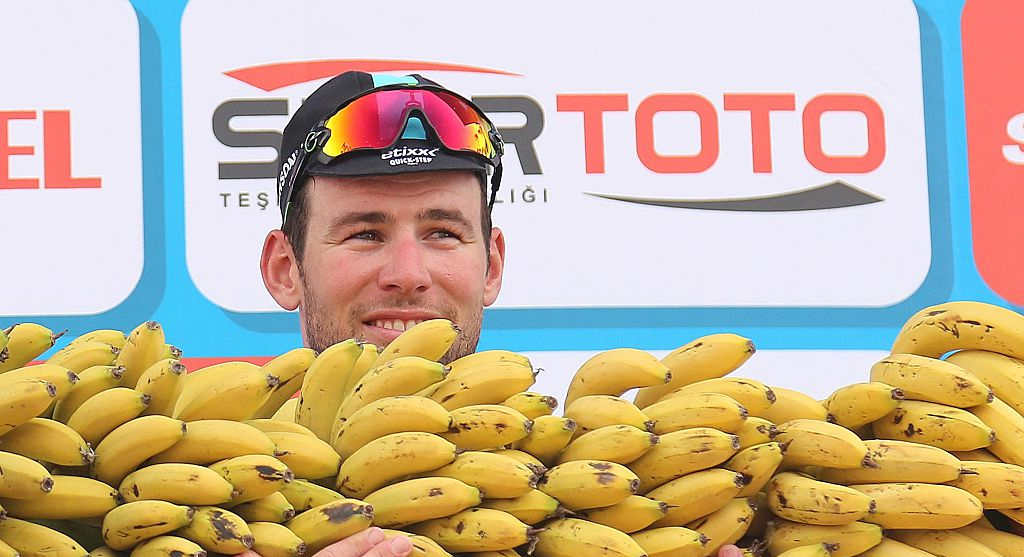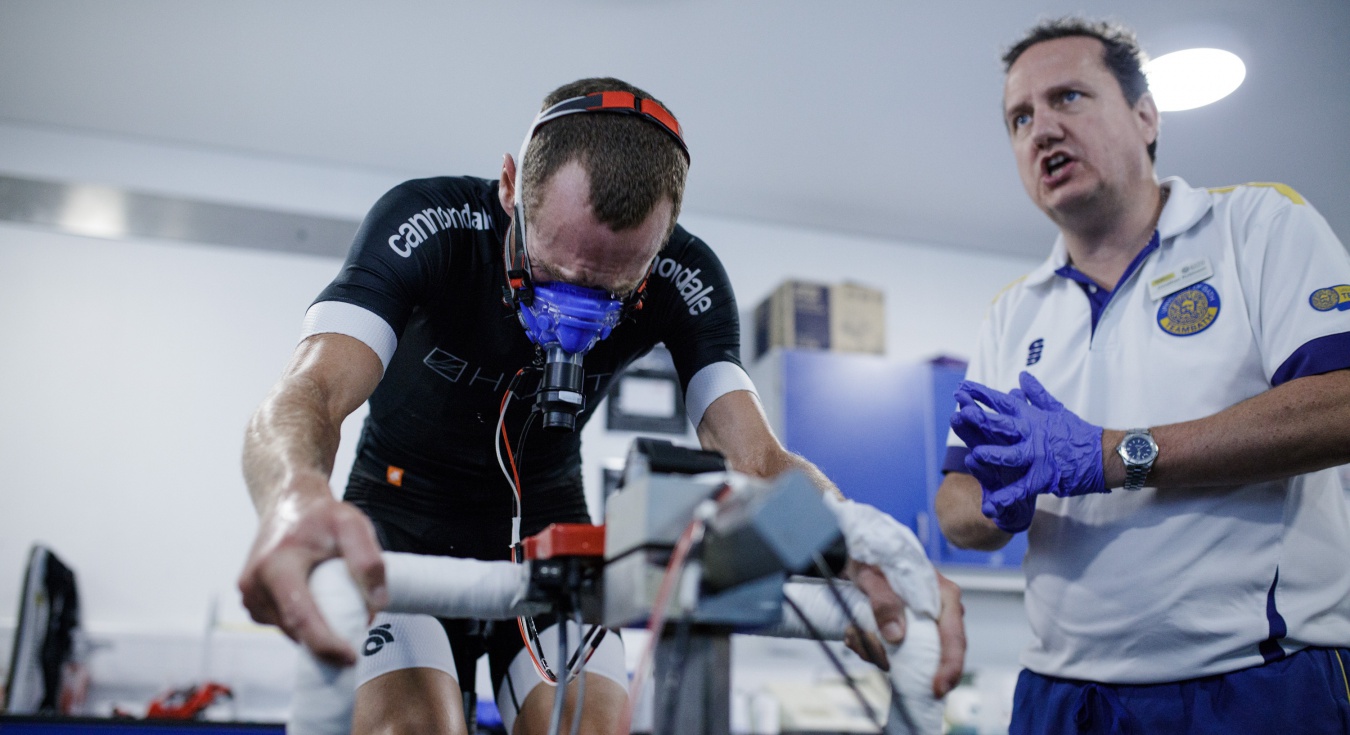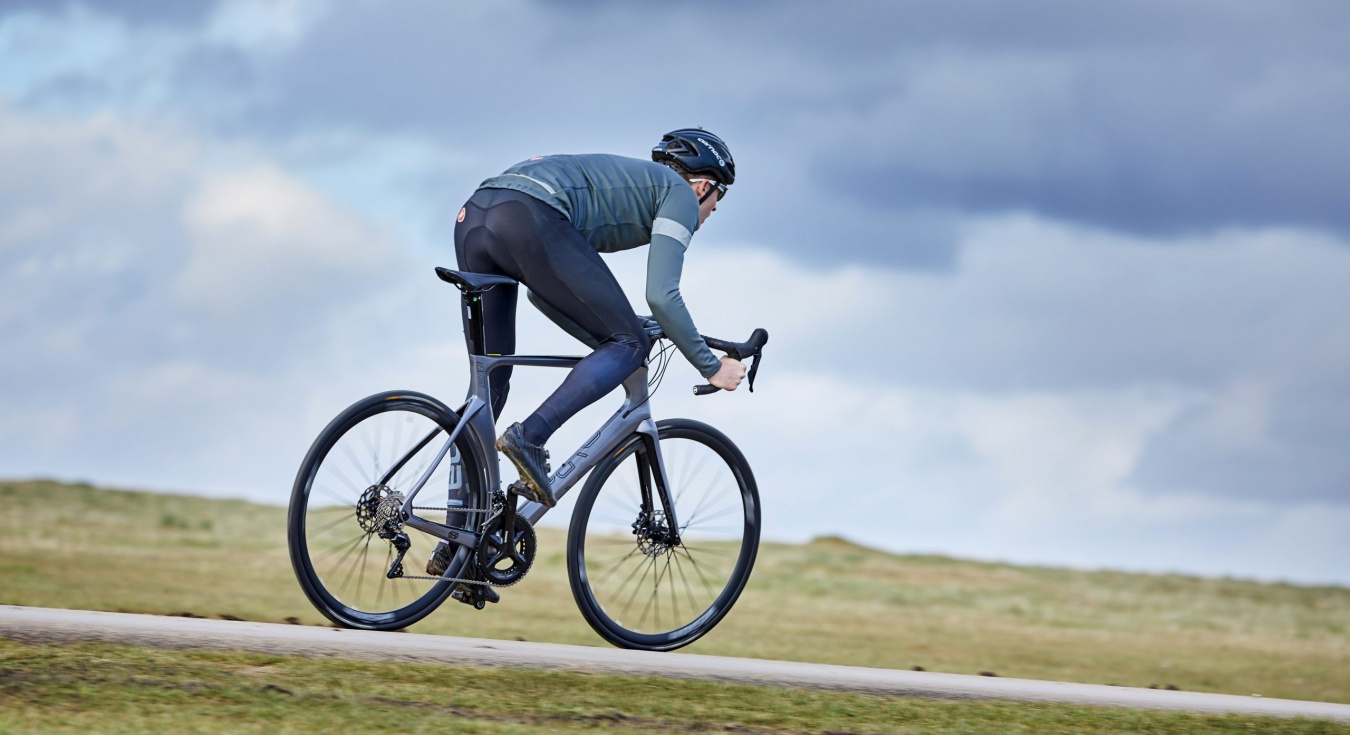How many calories does cycling burn? Does road riding or mountain biking burn more calories? Does riding on the indoor trainer make a difference? As with many things, it depends.
I went for a 40km cycle ride the other day. I recorded the ride on a Polar smartwatch and on a Lezyne GPS and although the Polar told me I burned 1,235 calories, Lezyne reckoned that I only put out 933. That’s roughly the energy content of my breakfast before the ride or, less healthily, a post-ride McDonald’s cheeseburger.
So how can you get an accurate estimate of the calories you burn when cycling and what influences the energy you expend?
We asked Claire Desroches, sports nutritionist at Bodyline Fitness and Will Girling, lead nutritionist to the EF Pro Cycling team, for their advice.
The basics
Riding a bike burns calories – we know that much – but how many exactly? Robert Smith / Immediate Media
First off, you’re always burning calories, turning them into energy to keep you alive, even when you’re sitting on the couch doing nothing. That’s your resting calories or basal metabolic rate.
Jump on your bike and start to ride and you’ll burn extra calories, which are usually called your active calories.
How many calories you burn depends on a number of factors, including your weight, fitness level and gender – in other words, factors intrinsic to you.
It also depends on how far you ride, how fast, the terrain, wind direction and other extrinsic factors.
Accurately determining calories burned is a very involved process best done in a lab. Simon Bromley
Measuring active calories accurately has to be done in a lab, either by using the heat that you produce or by looking at how much oxygen you are consuming and how much carbon dioxide you produce as you output power on a stationary bike.
You use oxygen to burn foodstuffs to keep your body running and produce carbon dioxide gas as a result, hence the link between calories and breathing.
Lab testing is expensive and not exactly accessible or easy to do, so if you use a fitness- or ride-tracking app, it will use one of an array of different algorithms to produce an estimate.
Which measurements you provide as inputs, such as heart rate and power, and how they’re used in the calculation, will determine the number that the app comes up with – and how accurate it is.
When you cycle, around half of your energy is spent pushing against air resistance.
That increases as the cube of your speed, so you’ll need to use eight times as many calories to overcome this if you cycle twice as fast. (Cube of your speed is one power up from the square, so if you double your speed the amount of energy you need is 2 x 2 x 2 = x8. If you went three times as fast it would be 3 x 3 x 3 = x27 etc. So the amount of effort required increases fast.)
A larger, less aerodynamic rider will have more air resistance to overcome than one who’s smaller or riding in a more aero position.
Then there’s moving your weight around and carrying it up hills.
Depending on where you’re riding, that might take up around a quarter of your calorie output. Friction in the bike’s gears and from the tyres against the road might make up roughly another 15 per cent.
So aside from factors related to your physiology and fitness level, working out how many calories you’ll burn cycling is mainly dependent on how far and fast you ride, and how heavy you are.
A baseline figure for the calories burned in a moderate-intensity workout for a healthy 75kg male rider is around 600 calories per hour, says Desroches. For an average female cyclist that’s likely to be around 500 calories.
You can refine that estimate by using online calculators such as that at CaloriesBurnedHQ, which take account of your weight and speed to give a more tailored number.
Another estimate is based on your MET score, standing for Metabolic Equivalent of Tasks.
These are dependent on weight and compare energy expenditure for different activities relative to a baseline.
But even that’s not taking account of other factors that will affect the real number, such as age and sex, while your level of fitness and training will also have a big impact on your energy expenditure.
How do I get to a more accurate estimate of calories used?
Ultimately, the more data you have available the better the estimate will be. Girling and Desroches both stress the importance of knowing your VO2 max and maximum heart rate.
Those numbers feed into apps such as TrainingPeaks to calculate which zone you are working in during a workout and are figures you’ll need to keep track of as your fitness level changes over time.
The more data the better. Simon Wilkinson/SWPix.com
Training with a heart rate strap (more accurate than wrist-based optical measurement) and a power meter will show how efficiently you’re working.
Again, your efficiency is likely to vary over time, so heart rate is a better metric than power alone for how many calories you’re burning. TrainingPeaks will use the numbers from your heart rate and power to derive your energy output during a workout.
Girling suggests looking at your training data in an app like TrainingPeaks over a two- to four-week window, to get an estimate of your average one-hour energy expenditure. You can refine that by looking at different types of workout: for example, steady riders versus high-intensity efforts.
Strava and other fitness apps
Many rides end up on Strava, whether recorded on another device or via Strava’s own phone app, with each Strava record including an estimate of the number of calories you’ve used.
How Strava works out your energy output on a ride depends on how you recorded it.
So, if your Garmin or other device calculates a number for calories and sends that to Strava with your workout, Strava will just use that. Changing your weight or other variables in Strava itself will have no effect on that number – you’ll have to update it in the recording device.
But if there’s no calorie data for an uploaded workout or you use the Strava mobile app to record your ride, Strava uses your power data along with an estimate of the average efficiency with which humans convert food energy to output energy when cycling, in order to derive a number.
There’s a second estimate to calculate power output if you’re not using a power meter. This is based on your ride stats and the weight of you and your bike, so inevitably there’s plenty of room for inaccuracy.
A 2017 study by Stanford University looked at the calorie burn estimates from seven different wristband activity trackers, finding that most measured heart rate fairly accurately, to within 5 per cent.
But none calculated energy expenditure accurately: Stanford found estimates were between 27 per cent and a whopping 98 per cent off, although it’s possible that that’s improved as companies have gathered more data and improved their calculations.
Does mountain biking burn more calories than road cycling?
You can just as easily burn more calories mountain biking as road riding, or it can go totally the other way.
Quite simply, it depends.
If you’re riding fast on technical trails with lots of ups and downs, you’ll burn a lot more calories than if you’re going slowly on less technical terrain.
Most people will be going more slowly on a mountain bike than on a road bike, so aerodynamic drag may be less, although your riding position is more upright, so that will act in the opposite direction.
And you’re likely to be going up and down hills more on a mountain bike than a road bike, plus the bike will probably be heavier and there will be more rolling resistance from the chunky tyres. The sum of these opposing factors means that mountain biking and road cycling calorie burns are likely to be similar.
If you’re into downhill mountain biking, Girling points out that although you’re not pedalling much, you are tensing your muscles. Studies have shown that your heart rate may not increase that much, but you’ll still burn energy for this, although they found it difficult to quantify how much.
How many calories do I burn cycling on an indoor trainer?
Indoor training is a great way to get fit fast.
Again, this depends on how long and how hard you push, although without aerodynamic drag most resistance comes from the friction unit in the turbo trainer or exercise bike, which is why it may become hot.
A few studies have taken place looking at calorie counts for indoor cycling – for a 70kg rider cycling at around 25kph, they all come up with roughly the same figure of 800 calories an hour.
That’s comparable to outdoor cycling because you’re not having to take account of road conditions or make stops and starts.
Plus, on many trainers, unlike outdoors, you can’t take a rest on a downhill section so you’ll be burning energy more consistently.
So now I know how much energy I’ve used cycling, can I eat more?
Here is BikeRadar’s Joe Norledge demonstrating an excellent eating technique. Don’t let your calorie burn dictate how many sweets you eat, though. Jack Luke / Immediate Media
Desroches counsels against using estimates of energy expenditure to justify extra food intake.
As well as inaccuracies in calculations of energy used, estimates of the energy content of foods can also be inaccurate. Plus, your body will continue to burn extra fuel for up to 72 hours after a good workout. For more advice, check out our tips on how to lose weight cycling.
According to Dr Euan Ashley, author of the Stanford study on fitness trackers: “Basing the number of doughnuts you eat on how many calories your device says you burned is a really bad idea”.
Ultimately, you should be riding for your own pleasure and the increased fitness it will bring, not just to justify your food intake, emphasises Desroches.



